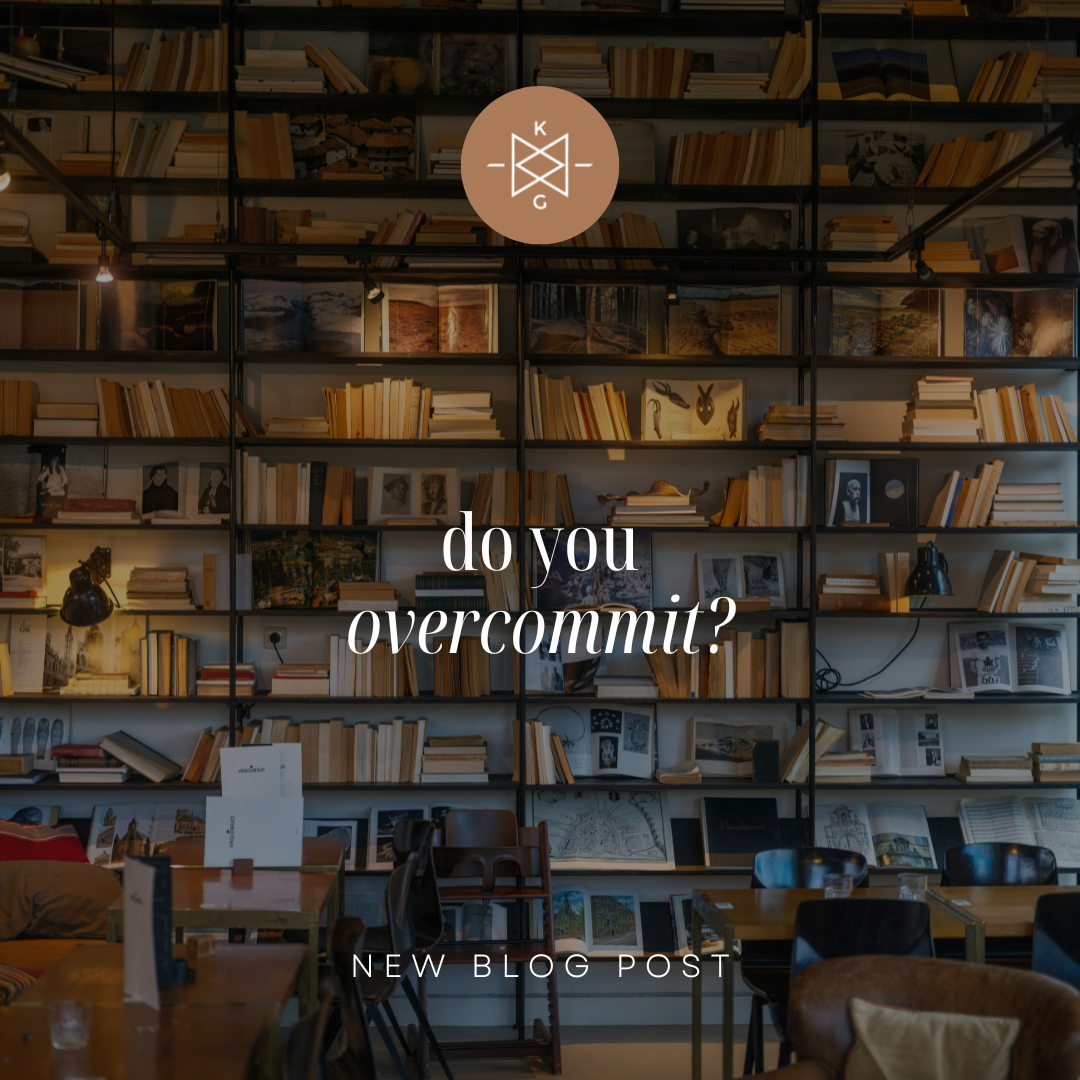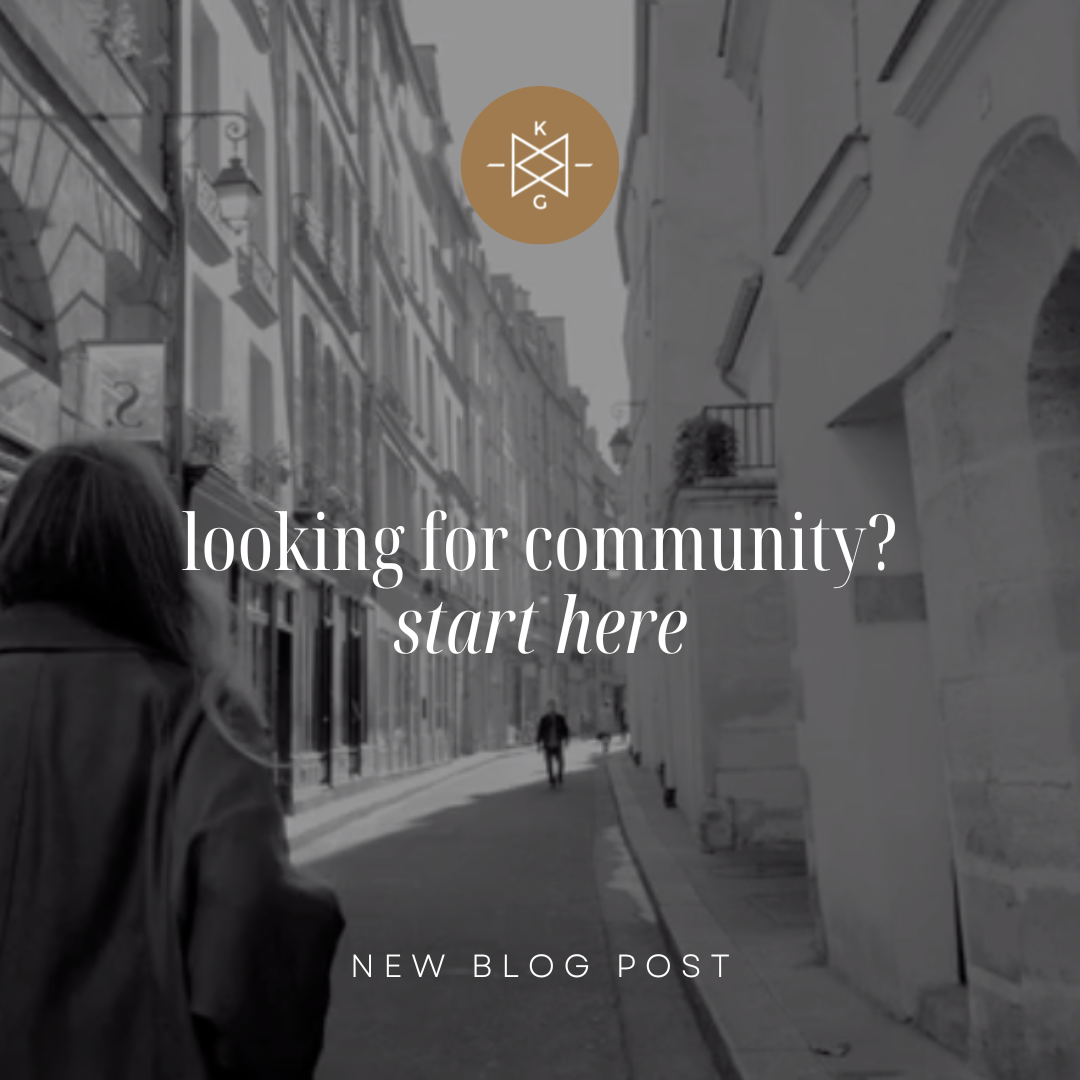
The Blog
Recently Featured
All Blogs
I Wish I Had Known This at 25
“Where we think we need more self-discipline, we usually need more self-love.”
- Tara Mohr
What piece of advice would you give your 25-year-old self? Sure, she may not have listened, but like any loving parent, you do what you can to steer your children in the right direction. That headstrong seeker was only doing her best. And yet today, you have matured into the expansive space of perspective and more balance. I know you have a lot to offer your younger, stubborn self.
Me? I would have a spirited come-to-Jesus about how to relax into the unknown, one brave and wobbly step at a time. I’d tell her that having all the answers isn’t half as important as asking honest questions.
Specifically, I’d love for her to understand what it means to have a growth mindset as opposed to a fixed one—less either-or and more both-and.
As a recovering perfectionist, I’ve been all too familiar with what it means to have a fixed mindset—you know, the way of thinking that is rigid and narrow. It’s all about pass or fail, win or lose, good or bad, black and white. It’s rooted in judgment rather than curiosity. It’s refusing to take myself on a brisk 20-minute walk because I didn’t have enough time to do my hour-long high-intensity workout.
Here’s another example. You have your six-month review at work. Your boss gives you high marks in several areas but points out one specific necessary improvement in your performance on a big project. A fixed mindset self-criticizes, labeling your performance as a failure. A fixed mindset disregards the praise and zeros in on the area of improvement. A growth mindset celebrates the positive feedback and understands the value of constructive criticism for future success. A growth mindset sees life as a slew of peaks and valleys all leading to necessary learning and expansion. It looks at life as an experiment, not a performance.
A growth mindset is the petri dish that breeds resilience. A fixed approach creates inflexibility, closing us off from abundance and opportunity.
This isn’t about glossing over reality. It’s about softening your approach to the inevitable ebbs and flows of life and enjoying yourself a bit more along the way.
Spend some time this week pondering this:
What area of your life could you stand to soften into? Is it your relationship with food, your body, parenting, or work? Is it your self-care? Whatever it may be, I believe a great way to find out is to pay attention to our self-talk, that often nagging inner critic that rages on involuntarily.
Write it all down.
I love what Tara Mohr says: “Where we think we need more self-discipline, we usually need more self-love.”
The Somatic Enneagram
“The human body is a river of intelligence, energy, and information that is constantly renewing itself in every second of our existence.”
- Deepak Chopra
One of my favorite things about the Enneagram is its holistic capacity to bring balance and integration to our overall experience. I’ve heard it described as a psycho-spiritual tool, one that provides benefits on a psychological and spiritual plane. It definitely does this. However if we dismiss the rich insight the enneagram provides to us on a somatic (body) level, we are missing out on the gifts it can bring to our total embodiment day after day.
You may have heard about the concept of three intelligence centers: body, heart, and mind, frequently taught in enneagram circles. Basically, this proves that we are actually three-brained beings (heart, body, mind) instead of one-brained beings (mind), as has been elevated in our modern western world. Emotional intelligence has made a big splash in the last 50 years or so, yet somatic intelligence has not been as accepted until now. Thankfully, recent scientific studies are finally catching up to this wisdom of the enneagram by proving we have neural cells not just in our brains, but in the lining of our stomachs and hearts. Crazy, right?
I interviewed Terry Saracino, core faculty member of the Narrative Enneagram (and my teacher…pinch me!) for the Practice, my enneagram-based self-care membership program. Specifically, we talked about the somatic approach unique to the Narrative Tradition. If you are interested in taking your enneagram understanding and overall well-being to the next level, I hope you will join the Practice and check out that conversation. Terry is lovely, brilliant, and as passionate today about this system as when she first learned about it in 1989.
She describes this dynamic approach to understanding ourselves through the lens of the enneagram, and really unpacking this often forgotten intelligence center of the body. Interestingly, our bodies are always in the present moment. Our hearts and minds can be all over the map, future-tripping and stuck in the past, but our bodies ground us in the present moment if we are willing to bring greater awareness to them. Our bodies are the experiencers of our enneagram type patterns of thought and emotion, so we must lean on them for greater insight and support in our day to day experience.
Many of us are wildly disconnected from this somatic, or kinesthetic wisdom. And one of the trillion things I love about the enneagram is it’s all about bringing balance and openness where there is imbalance and contraction.
When we do the work of the enneagram, we discover our personality type and deeper character structure are held into place by our types emotional patterns, thought patterns, and somatic profile. I love getting to work with clients to bring awareness to this unique type-specific picture and begin to relax these often limiting patterns. As we relax those conditioned patterns, we are able to open up to the true, or unconditioned self that has been buried under years of habit and automatic behaviors.
Do you long to experience a more embodied, balanced, and fulfilling life? If so, you’ve come to the right place. I’d love to guide you and your team deeper into the enneagram.
Stressed? I got you...
“When I look back on all these worries, I remember the story of the old man who said on his deathbed that he had had a lot of trouble in his life, most of which had never happened.”
– Winston Churchill
Spoiler Alert: There will always be something to stress you out. Life is chock full of reasons. However, we will also always have the choice to lean into it or become enslaved by it.
In light of this, I believe our work is not avoiding stress—it’s learning how to relate to it.
Unfortunately, lots of us proudly (I’m so guilty) tout our epic workloads, deadlines, kid’s practice schedules, and lack of sleep around like we’ve just won a Nobel Peace Prize.
Let’s take a quick look at the neurobiology of stress.
First off, not all stress is bad, nor are the hormones stress creates in the body as a result. They ebb and flow throughout the day in order to help us adjust to the stressors of normal, everyday life. Moments like waking up (no joke!), getting to work on time, giving a presentation, getting a traffic ticket, and even being surprised on your birthday all require shifts in our internal ecosystem to stay regulated.
More good news, stress is highly manageable. We’ll look at ways to do so a bit later.
Long-term stress left unchecked, however, is a different beast. Our bodies and brains were not created to undergo this brand of stress and anxiety. In fact, as much as we think we are being responsible and hardworking, we are directly inflicting ongoing toxic wounds on ourselves. This eventually will show in the form of negative, noticeable emotional and physical symptoms.
Neuroscientists at the University of California, Berkeley, have discovered that chronic stress produces long-term changes in brain structure and function. This sheds light on the fact that youngsters exposed to ongoing stress early in life likely will develop mental illness and mood disorders such as anxiety, depression, insomnia, and even learning difficulties.
As a natural line of defense, our adrenal glands produce a hormone called Cortisol when we are met with stressful situations as part of the fight-or-flight mechanism. With good stress (eustress) these levels balance out once the threat of danger has passed and the body and brain return to normal.
However, in a state of chronic stress (distress), our well-meaning friend, Cortisol, has no outlet to release and the body stays locked in this hyper fight-or-flight mechanism. This survival mechanism must be released physically from the body and when it’s not, cortisol levels skyrocket in the blood, declaring war on our mind and body.
The wreckage? Lower immunity and bone density, weight gain, sleep problems, memory loss, learning disability, irritability (duh), increased blood pressure, cholesterol, heart disease, and inflammation throughout the body.
If that list doesn’t convince you, I don’t know what will. Bottom line my friend, we must be vigilant in listening to the needs of our bodies and emotions and practice actively getting them met.
Here are a few helpful tips that will reduce the effects of chronic stress and resulting cortisol levels in the body:
Regular physical activity: I’m an exercise evangelist. This blew past vanity a long time ago as I experienced the direct positive effect daily exercise has on my mood and overall experience. It is my antidepressant of choice. We absolutely must move our bodies regularly to aid the release of cortisol from our bodies and support emotional processing.
Mindfulness practices: Mindfulness practices such as meditation and deep breathing are vital in reducing stress and cortisol levels. Why? They engage the Vagus nerve which signals your nervous system to chill out, slow the heart rate as well as cortisol levels. Next time you’re in the death grip of stress, take ten deep breaths. Panic cannot co-exist with a relaxed state. Click here for a free meditation I’ve created to support you in this practice.
Community: Social interaction is a powerful antidote for stress and anxiety. In fact, human bonding also triggers that Vagus nerve mentioned earlier, relaxing the parasympathetic nervous system. Not only that, social connectivity releases that yummy hormone called oxytocin, which directly lowers the fight-or-flight mechanism. That whole eight hugs in a day thing is real!
Laughter and music: Both are game changers and have been proven to lower cortisol levels. Not only that, but they invite us into the experience of the present moment, the most desirable real estate on the planet when it comes to experiencing more levity and joy.
Last thing I’ll say before I land this plane: we were created to thrive, not merely survive. However, some of life’s seasons require us to dig a little deeper into our resilience tool kit. If you find yourself needing some extra support these days, please reach out. I’d love to support you.
How to Move from Information to Transformation
“If we observe ourselves truthfully and non-judgmentally, seeing the mechanisms of our personality in action, we can wake up, and our lives can be a miraculous unfolding of beauty and joy.”
-Richard Rohr
There’s an Enneagram trend that’s growing these days and I couldn’t be happier about it. It’s moving beyond a buzzy personality test and all those cute memes on Instagram, to a powerful tool for application and true transformation.
We’re beginning to understand the dynamism of the Enneagram as we put it into practice. Talk is cheap, but it’s a crucial first step in the process. We can sit around at coffee shops and dinner tables exploring the behavior patterns of our types for days. Sure, consuming clever, if not stereotypical content on social media is fun—and can even be helpful for a time. In some ways, they support us as we identify our dominant type. Yet we absolutely must not stay there.
So what does it mean to work with our type? How do we go from the surface of personality to the integration and wholeness this beautiful tool is capable of?
I believe it requires the desire to fully understand and explore our deeper character structure, dissecting the core elements of our type. Those core elements include the passion, or emotional pattern that keeps us stuck in type, the virtue, or our type’s unique invitation beyond the passion into our true self, our mental fixation, defense mechanism, somatic profile, as well as the lines, arrows, and wings of our type.
If that all sounds overwhelming, congratulations…it IS!!!
Yet the basic proposition of the Enneagram is to understand the motivation behind the ways in which we think, feel, and act in our unique type. It’s all about identifying and understanding the specific box of personality we’re in so that we can get out, finding freedom as we open up to greater openness and receptivity.
Don’t be bogged down by the intricate web of complexity of your specific type. The place to start is simple: self-observation.
Sounds pretty basic, right?
However, it might feel very foreign as we commit to a non-judgmental study of ourselves and our experiences.
My favorite way to learn self-observation? Together—in community! as we learn to hone the muscle of self-awareness and others-awareness, we become better observers and participants in relationship and enjoy a more balanced, integrated experience.
I’d love for you to join my online learning community called The Practice. It’s a guided tour through the map of the Enneagram and how to put it into practice in your daily life with support from me as well as a community of like-minded folks. From weekly teaching videos to guided meditations, daily journal prompts AND themed yoga flows, it’s a holistic tool to support you in your self-care and enneagram journey.
I can’t wait to go deeper with you…
The Hospitality of Emotion
“People will forget what you said, forget what you did, but people will never forget how you made them feel.”
-Maya Angelou
I love hosting dinner parties: the planning, shopping, prepping, pairing, cooking, connecting, eating, lingering…hell, I don’t even mind the clean up so much. I’m pretty sure my most domestic moments happen in the kitchen. (Laundry? Not my gig, much to my husband’s chagrin.) Cooking has always been a creative outlet as well as a therapeutic one for me. For a hot minute in my mid-twenties I toyed with the thought of culinary school yet found in my short-lived career as a sous chef that cooking on someone else’s watch for people I couldn’t actually connect with was a deal breaker; it hijacked the joy for me.
I eventually discovered two real driving passions behind my love for all things culinary: the connection that happens around it and the creativity had in the process ( oh, and there is that eating thing as well). Hence, this favorite past time of mine—throwing dinner parties. I get a buzz just thinking about it.
We live in a world on crack: a world jacked up and in a constant crazed state of busy, exhausted, immediacy, devices, and traffic; all set to repeat. Hospitality has become a lost art because it forces us to slow down and do things that can be automated and/or bypassed by hitting the nearest Chipotle or even the newest foodie hot spot on the scene. As a result, we lose out on a beautiful process that facilitates good old fashioned real-time connection, intimacy, and laughter.
Last Fall, I hosted a cozy outdoor dinner party to itch that big ole scratch. It was everything. Having an outdoor, sit-down dinner party in the young days of November in Nashville is like betting your life savings at a craps table in Vegas. It’s risky if not ludicrous.
Much to our amazement, God flexed his creative muscles and painted the most magical fall scape one could possibly ask, or pray for. The wind, cold, and rain came to a precise halt. The sun-drenched rolling hills popped with a smattering of brick, gold, and orange. The burn your-eyes-out blue sky held on patiently all the way up to sunset. Between the outdoor heaters, cozy blankets strewn on every other chair, and the roaring conversation and laughter, we stayed warm well into the night. It was delicious and lovely complete with clinking glasses, a stained table runner, and hours of clean up the next morning. Perhaps my favorite part of the evening was the interesting mix of friends who came, both new and old. Stories were shared, intimate toasts given, and wild connections were made. It was truly a magical evening.
As I sat back contentedly and observed conversations happening across the table, glasses being filled, fall flavors offering up their glory, something occurred to me; something big.
Why can’t we learn to practice hospitality internally, with our own full cast of different parts and emotions? What if we welcomed them openly, leaning in to the complex story they are trying to tell instead of handing them the keys to our misery? I’ve been intrigued by this idea ever since, playing around with it in my head and heart…and I like it.
Emotions are a gift if you can believe it. I sure didn’t for long stretches of my existence. I always thought emotions had all the power, dictating the success of any given day from the moment my eyeballs popped open in the morning. I used to feel totally powerless over my emotions, especially anxiety, she was a loud and clumsy beast. What I have come to learn and embrace with open arms and a big fat sigh of relief is that my emotions are not who I am. Enneagram four much? I am not my anxiety, sadness, hurt, depression, etc.
They are also not against me. Of course, there are more enjoyable ones we feel such as glad and excited; we tend to coddle them like spoiled children. Then there are negative feeling ones such as guilt and anger we attempt to avoid like loud, messy roommates. However, the truth is they all invite us to the greater wisdom of our needs and desires. Our emotions are a gift nudging us towards a more colorful, expansive experience.
Just as the generous practice of hospitality beckons deeper connection and understanding of our unique perspectives and experiences across a dinner table, the inner landscape of our feelings long for a space to be heard. How will we host these voices and facilitate a curious exchange, an open conversation? Here are a couple of questions to ask them when they chime in, with their often abrasive tone.
What am I feeling? Sad, hurt, fear, anger, lonely, guilt, glad? Naming it identifies and externalizes it.
Where do I feel this feeling in my body? (Our bodies house emotions, memories, trauma, you name it! We need to wise up to this and get cozy communicating with it.)
What is the story you are trying to tell me? i.e “I am afraid I don’t have what it takes to succeed, I’m not enough.” “I am guilty because I spoke harshly to my co-worker.”
What is the need attached to the emotion? i.e. “I need some encouragement and affirmation,” or “I need to apologize for reacting at work, I was pretty fried and took it out on Sarah.”
How will I meet that need? i.e. Reach out to a trusted friend or have a conversation to set the record straight, etc…
Emotional hospitality removes unnecessary shame from our internal experience by letting light and air into dingy, dusty corners of our beings. It swings wide open the door of our heart and places a fresh mix of flowers on the table, welcoming deeper connection and cohesion. It nourishes our beings to live with presence and generosity. When we are willing to curiously experiment with each and every emotion, engaging it like we would a stranger at a dinner party, we gain new insight and perspective. We hear a new story. If we listen closely enough, we may even hear our own story.































